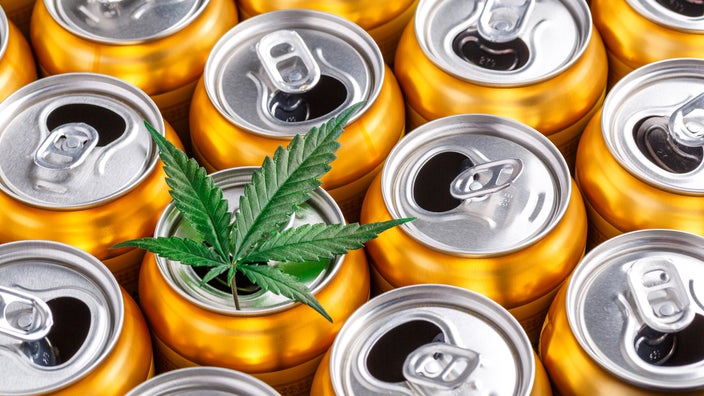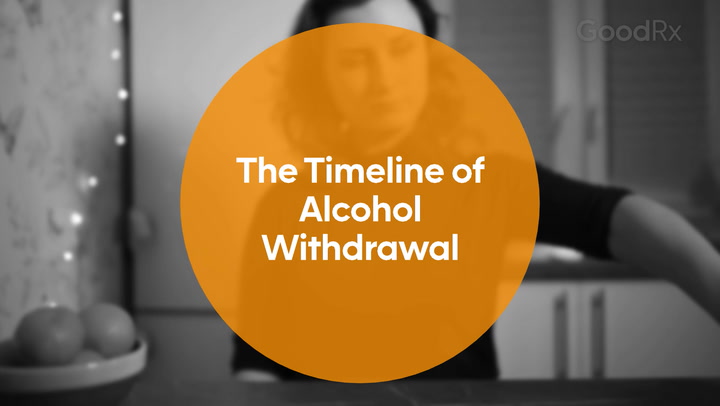
Are Weed (Cannabis) and Alcohol Equally Dangerous, or Is One Safer Than the Other?
Key takeaways:
Cannabis and alcohol alter your thinking, reaction time, and coordination, making activities like driving dangerous.
Growing evidence shows that regular cannabis use increases your risk of heart disease and stroke.
Alcohol is well-known to have many negative short- and long-term effects on your health.
Between weed and alcohol, there is no “safe” option.
Table of contents

More people than ever have access to cannabis, using it for personal and medical reasons. The beverage sector of the cannabis industry is booming, as consumers look for ways to substitute alcohol for cannabis. But how do cannabis and alcohol measure up when it comes to health and safety?
What are the dangers and health risks of alcohol use?
Alcohol is well known to impair thinking and coordination, but it also has a direct impact on our brains and bodies. Drinking too much, either on a single occasion or over a long period of time, can have serious health consequences. The less you use alcohol, the lower your risks are.
The CDC defines several kinds of excessive drinking:
Binge drinking: a pattern of drinking where blood alcohol levels exceed 0.08% (about 4 drinks in a single occasion for women, and 5 drinks for men)
Heavy drinking: more than 15 drinks per week for men, or 8 drinks per week for women
Alcohol use disorder: the inability to stop drinking, despite negative consequences
A Cannabis Inhaler For Rapid Pain Relief, Expert Care Included
For aches, pains, and stress. Clinician-led guidance included. Shipped right to your door. Get 10% off with code TRYEO.

Must be 21 years or older to purchase. Cannabis is not recommended for women who are pregnant or nursing or those who are suffering from bipolar disorder or schizophrenia. Cannabis use may increase risk of falls. Always consult with your doctor before beginning any new medical treatment.
Excessive drinking has serious consequences on both personal and societal levels. The CDC estimates that in the U.S., the cost of excessive drinking surpasses $249 billion every year. From a health perspective, excessive alcohol use is linked with:
Chronic diseases such as heart disease
Problems with the liver, pancreas, brain, and immune system
Accidental injuries (like vehicle crashes, falls, and drowning)
Harming others (intimate partner violence and fetal alcohol exposure, for example)
Memory and learning problems
Shorter life span
Death from alcohol poisoning
Even for people who do not drink excessively, alcohol can still have negative impacts such as:
Upset stomach and nausea
Poor sleep
Dangerous medication interactions
Toxic chemical exposure — when the liver breaks down alcohol, it creates a bi-product called acetaldehyde, which can cause cancer
There are some people who should avoid alcohol altogether. These include people under 21 years old and those who are pregnant or could be pregnant.
Underage alcohol use can have long-lasting effects on the developing brain, causing memory and learning problems, as well as a higher chance of alcohol problems in adulthood. Excessive alcohol at any stage of pregnancy can cause serious birth defects.
What are the dangers and health risks of cannabis use?
Historically, widespread alcohol use has been much more common than cannabis use. And due to federal restrictions on cannabis research, we know a lot less about the long-term consequences of cannabis use compared to alcohol.
Read more like this
Explore these related articles, suggested for readers like you.
However, there do appear to be some similarities between alcohol and cannabis use. People who are under 21, pregnant, or breastfeeding should avoid them. Both substances can:
Contribute to memory, thinking problems, and addiction
Cause medication interactions
Affect the developing brain
There is also building evidence that cannabis use is bad for your heart. Data from over 400,000 adults demonstrated a link between regular cannabis use and increased risk of heart attack or stroke. It may also lead to heart rhythm problems. And studies suggest that smoking cannabis is associated with a greater risk for bronchitis and other lung injuries.
Much of what we know about the risks of cannabis is based on research conducted prior to legalization. Law-abiding cannabis users may use cannabis differently and/or less frequently than people who use cannabis illegally. Because of this, the risks are probably different too. One of the benefits of cannabis legalization is that it makes it easier to conduct research on topics like this.
The health benefits of alcohol vs. weed
There are very few health benefits of alcohol. Previously, experts believed moderate use of alcohol (about one drink per day) was linked to cardiovascular health benefits. But the research is fairly clear that any benefits do not outweigh the risks.
Again, research into the benefits of cannabis to date has been limited. But it does suggest that cannabis use may help:
Relieve pain
Reduce nausea and vomiting from chemotherapy
Promote sleep in people with chronic pain
Improve mood and quality of life in people with health conditions
Ongoing research is focused on other potential health benefits of cannabis, such as its ability to help with cancer, inflammatory bowel disease, and autism, as well as neurodegenerative diseases and many more.
How many deaths are associated with cannabis use compared to alcohol use?
The CDC estimates that 95,000 people die from excessive drinking every year. Most of these deaths are caused by the negative health effects of too much alcohol over long periods of time (like heart disease). The CDC also estimates that about 2,200 Americans die directly from alcohol poisoning every year.
An overdose from cannabis is highly unlikely. Experts estimate that it would take amounts so large (pounds), that it would be impossible for a person to consume that much at one time. That said, many people have died with THC in their blood, for example after a car accident.
Although extremely uncommon, there have been several reports of young children who go into a coma or stop breathing after accidentally consuming cannabis.
Is it safer to use marijuana and drive than to drink and drive?
Cannabis and alcohol both negatively affect a person’s ability to drive. Many studies have shown that reaction time, body coordination, and attention, in addition to concentration, are all negatively impacted by alcohol and cannabis.
About 28% of motor vehicle deaths are caused by alcohol-impaired drivers, taking more than 10,000 lives every year.
It’s harder to measure cannabis impairment than alcohol impairment, and there is conflicting research when it comes to cannabis’s impact on traffic safety. What is clear, however, is that using cannabis before driving increases the chance of being in an accident.
In some states, traffic fatalities increase after cannabis legalization. However, in other states, there is no change in fatalities after legalization. More long-term research is needed to fully understand cannabis-impaired driving.
Are the risks of overusing weed as dangerous as overusing alcohol?
Excessive use of either cannabis or alcohol is associated with the greatest risks. Moderation is a key harm-reduction strategy for both substances.
An acute overdose of alcohol can directly cause liver damage or death. Indirectly, excessive alcohol can contribute to poor decision making, risky behavior, and accidents that cause bodily injury.
An overdose of cannabis is rarely deadly but can require medical care. High doses of THC can trigger intense anxiety, hallucinations, or delusional thoughts. In this state, it can be difficult to make logical decisions or avoid dangerous situations.
The bottom line
Current research suggests that both alcohol and cannabis have health risks. The greatest risks are with excessive consumption of either, but the risks of regular use can also add up. Ultimately, between alcohol and cannabis, it’s not possible to say that one is safer than the other. The safest amount of alcohol or cannabis is the smallest amount.
Why trust our experts?



If you or someone you know struggles with substance use, help is available. Call SAMHSA’s National Helpline at 1-800-662-HELP (4357) to learn about resources in your area.
Keep in mind that cannabis is legal in some states for recreational and/or medicinal use, but not in others. Cannabis is still illegal under federal law. Before you use cannabis products, find out the laws in your state.
References
Appelboam, A., et al. (2006). Coma due to cannabis toxicity in an infant. European Journal of Emergency Medicine.
Arkell, T. R., et al. (2021). The failings of per se limits to detect cannabis-induced driving impairment: Results from a simulated driving study. Traffic Injury Prevention.
Burton, R., et al. (2018). No level of alcohol consumption improves health. The Lancet.
Carstairs, S. D., et al. (2011). Prolonged coma in a child due to hashish ingestion with quantitation of THC metabolites in urine. Journal of Emergency Medicine.
Castaldo, L., et al. (2019). Red wine consumption and cardiovascular health. Molecules.
Centers for Disease Control and Prevention. (2015). Alcohol poisoning deaths.
Centers for Disease Control and Prevention. (2021). Outbreak of lung injury associated with the use of e-cigarette, or vaping, products.
Centers for Disease Control and Prevention. (2022). Impaired driving: Get the facts.
Centers for Disease Control and Prevention. (2022). Alcohol and public health: Frequently asked questions.
Centers for Disease Control and Prevention. (2022). Excessive alcohol use.
Centers for Disease Control and Prevention. (2023). Fetal alcohol spectrum disorders (FASDs).
Centers for Disease Control and Prevention. (2023). Know your risk for heart disease.
Centers for Disease Control and Prevention. (2024). Binge drinking.
Centers for Disease Control and Prevention. (2024). Deaths from excessive alcohol use in the United States.
Centers for Disease Control and Prevention. (2024). Dietary guidelines for alcohol.
Centers for Disease Control and Prevention. (2024). Excessive drinking is draining the US economy.
Desai, R., et al. (2018). Burden of arrhythmia in recreational marijuana users. International Journal of Cardiology.
Ganesh, S., et al. (2020). Psychosis-relevant effects of intravenous delta-9-tetrahydrocannabinol: A mega analysis of individual participant-data from human laboratory studies. The International Journal of Neuropsychopharmacology.
González, J. M. P., et al. (2021). Safety and tolerability of nabiximols oromucosal spray: A review of more than 15 years" accumulated evidence from clinical trials. Expert Review of Neurotherapeutics.
Gracie, K., et al. (2021). Cannabis use disorder and the lungs. Addiction.
Gruber, S. A., et al. (2021). No pain, all gain? Interim analyses from a longitudinal, observational study examining the impact of medical cannabis treatment on chronic pain and related symptoms. Experimental and Clinical Psychopharmacology.
Haight, S. C., et al. (2021). Frequency of cannabis use during pregnancy and adverse infant outcomes, by cigarette smoking status - 8 PRAMS states. Drug and Alcohol Dependence.
Hosseini, N., et al. (2019). Alcoholic hepatitis: A review. Alcohol and Alcoholism.
Jeffers, A. M., et al., (2024). Association of cannabis use with cardiovascular outcomes among U.S. adults. Journal of the American Heart Association.
Lenné, M. G., (2010). The effects of cannabis and alcohol on simulated arterial driving: Influences of driving experience and task demand.
Nasrin, S., et al. (2021). Cannabinoid metabolites as inhibitors of major hepatic CYP450 enzymes, with implications for cannabis-drug interactions. Accident; Analysis and Prevention.
National Academies of Sciences, Engineering, and Medicine. (2017). The Health effects of cannabis and cannabinoids.
National Cancer Institute. (2021). Alcohol and cancer risk.
National Center for Chronic Disease Prevention and Health Promotion. (2022). Excessive alcohol use. Centers for Disease Control and Prevention.
National Highway Traffic Safety Administration. (2021). 2019 data: Alcohol-impaired driving. U.S. Department of Transportation.
National Institute on Alcohol Abuse and Alcoholism. (2014). Harmful interactions.
National Institute on Alcohol Abuse and Alcoholism. (2021). Alcohol’s effects on the body.
National Institute on Alcohol Abuse and Alcoholism. (2021). Hangovers.
National Institute on Alcohol Abuse and Alcoholism. (2021). Treatment for alcohol problems: Finding and getting help.
National Institute on Alcohol Abuse and Alcoholism. (2023). Alcohol’s effects on health.
National Institute on Alcohol Abuse and Alcoholism. (2023). Understanding the dangers of alcohol overdose.
National Institute on Alcohol Abuse and Alcoholism. (2024). Get the facts about underage drinking.
National Institute on Alcohol Abuse and Alcoholism. (2024). Understanding alcohol use disorder.
National Institute on Drug Abuse. (2019). Marijuana DrugFacts.
Netzahualcoyotzi, C., et al. Early consumption of cannabinoids: From adult neurogenesis to behavior. International Journal of Molecular Sciences.
Ng, T., et al. (2021). Tetrahydrocannabinol (THC). StatPearls.
Santaella-Tenorio, J., et al. (2020). Association of recreational cannabis laws in Colorado and Washington state with changes in traffic fatalities, 2005-2017. JAMA Internal Medicine.
Schaffer Library of Drug Policy. (n.d.). What is the lethal dose of marijuana?
Schlienz, N. J., et al. (2021). A cross-sectional and prospective comparison of medicinal cannabis users and controls on self-reported health. Cannabis and Cannabinoid Research.
Sempio, C., et al. (2021). Detection of cannabinoids by LC-MS-MS and ELISA in breast milk. Journal of Analytical Toxicology.
Shelton, S. K., et al. (2020). Why do patients come to the emergency department after using cannabis? Clinical Toxicology.
Stasiłowicz, A., et al. (2021). Cannabis sativa L. as a natural drug meeting the criteria of a multitarget approach to treatment. International Journal of Molecular Sciences.
Substance Abuse and Mental Health Services Administration. (n.d.). SAMHSA's national helpline. U.S. Department of Health and Human Services.
Tefft, B. C., et al. (2021). Estimating cannabis involvement in fatal crashes in Washington state before and after the legalization of recreational cannabis consumption using multiple imputation of missing values. American Journal of Epidemiology.
Windle, S. B., et al. (2021). Impaired driving and legalization of recreational cannabis. CMAJ: Canadian Medical Association Journal.




























